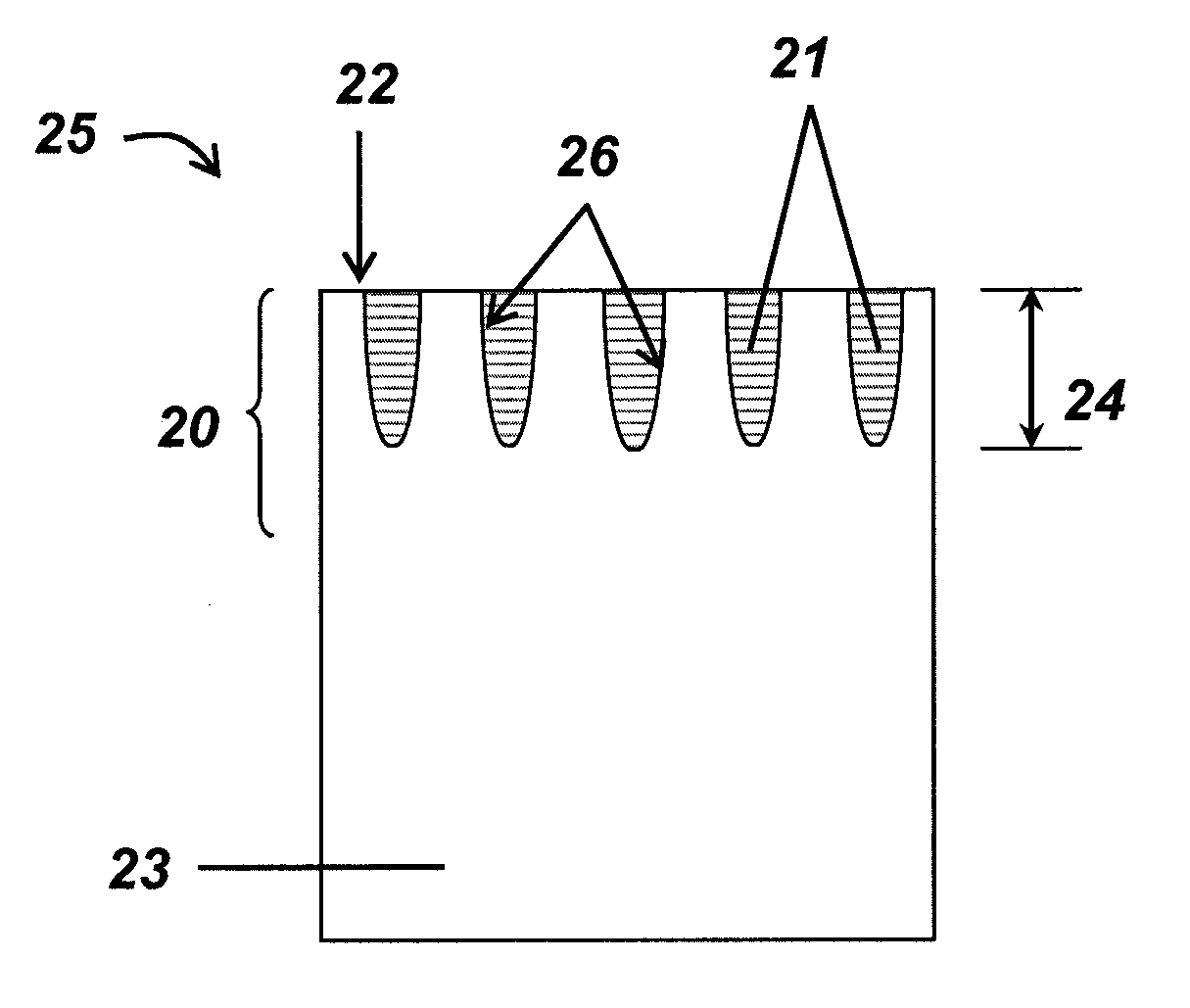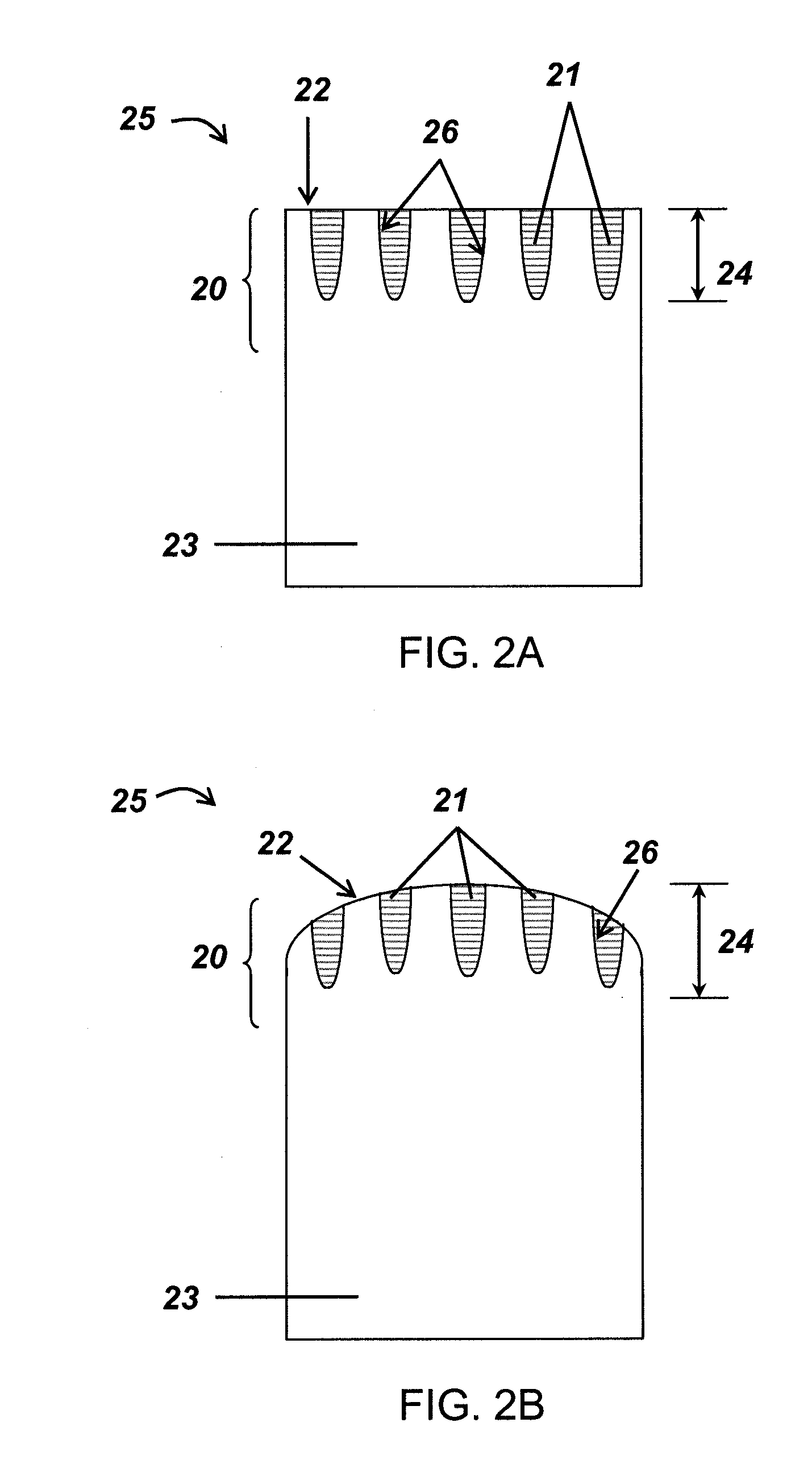Composite cutter substrate to mitigate residual stress
a technology of residual stress and substrate, which is applied in the field of composite cutting structures, can solve the problems of permanent damage and structural failure of pcd, delamination between the diamond layer and the substrate, and deterioration of pcd
- Summary
- Abstract
- Description
- Claims
- Application Information
AI Technical Summary
Benefits of technology
Problems solved by technology
Method used
Image
Examples
examples
[0088]In an exemplary embodiment, as shown in FIGS. 6A-C, non-planar regions are formed in the upper surface of a carbide substrate 63 (along the outer diameter of the substrate in this embodiment). An excess amount of a mixture of diamond particles and optional catalyst material 61 (61a being the diamond particles that “fill” the non-planar geometry of the substrate 63 and 61b being the “excess” diamond particles) may be placed adjacent to the non-planar upper surface such that the mixture 61b extends a distance above the carbide substrate upper surface. The mixture 61 and the substrate 63 are then subjected to a HPHT sintering process, whereby PCD-filled regions 66 and a PCD layer (from excess mixture 61b) are formed. The PCD layer is then removed, leaving a reduced-CTE substrate 60. The removed PCD layer is then leached to form a TSP diamond layer 64, and reattached to the reduced-CTE substrate 60 by HPHT sintering.
[0089]Alternatively, a lesser amount of diamond particles 61a may...
PUM
| Property | Measurement | Unit |
|---|---|---|
| temperature | aaaaa | aaaaa |
| depth | aaaaa | aaaaa |
| depth | aaaaa | aaaaa |
Abstract
Description
Claims
Application Information
 Login to View More
Login to View More - R&D
- Intellectual Property
- Life Sciences
- Materials
- Tech Scout
- Unparalleled Data Quality
- Higher Quality Content
- 60% Fewer Hallucinations
Browse by: Latest US Patents, China's latest patents, Technical Efficacy Thesaurus, Application Domain, Technology Topic, Popular Technical Reports.
© 2025 PatSnap. All rights reserved.Legal|Privacy policy|Modern Slavery Act Transparency Statement|Sitemap|About US| Contact US: help@patsnap.com



